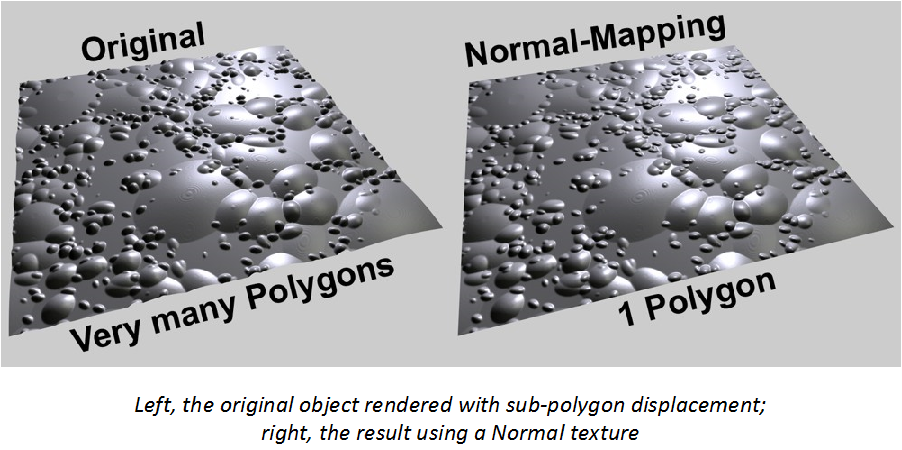
Normal (CineRender Surface Channel)
This surface channel produces a virtual surface irregularity that is lit realistically.
This entails technique called Normal Mapping (as opposed to Bump mapping). Normal mapping makes it possible to give a low-poly object (an object with a low level of detail) a detailed, seemingly structured surface, resulting in low render times.

•Bump mapping uses a grayscale bitmap to generate height data.
•Normal mapping uses an RGB texture with coded Normal orientation (the Normals can be oriented in various directions).
You can create Normal textures with the help of the Normalizer shader (which can load normal color textures, usually bump textures.
The rendered result will very much resemble the original high-poly object.


Regulates the strength of the Normal mapping. Do not use very high values because the effect will be increasingly unrealistic.
Basically, the higher the value used, the more perpendicular the view to the surface must be to keep the look of the surface realistic.
There are several methods with which Normal maps can be defined:
•Tangent: The most common method. The Normal orientation is defined with respect to the underlying surface. Such textures can be identified by their mostly light blue or light green coloring; these are the areas in which the Normals are oriented perpendicularly to the surface.
•Object: Uses the object’s coordinate system to code Normal orientation. Such textures emit, for the most part, in all colors of the rainbow.
•World: Uses the world coordinate system to code Normal orientation. These textures emit in all colors of the rainbow as well.
When selecting a method, you must know which method was used to create the Normal texture. This same method should be defined here.
Note: The Normalizer shader uses Tangents.
Flip X (Red)/Flip Y (Green)/Flip Z (Blue)
Since no standard method of creation of Normal textures exists, each application pretty much does it as it wishes: Sometimes the color component for the Y-orientation is green, sometimes blue. In order to assure maximum compatibility, these settings let you switch all color components.
The following rule of thumb applies to the most common method, Tangent:
•If the Normal texture is mostly light green, activate Swap Y & Z (Y up).
•If the Normal texture is mostly light blue, deactivate Swap Y & Z (Y up).